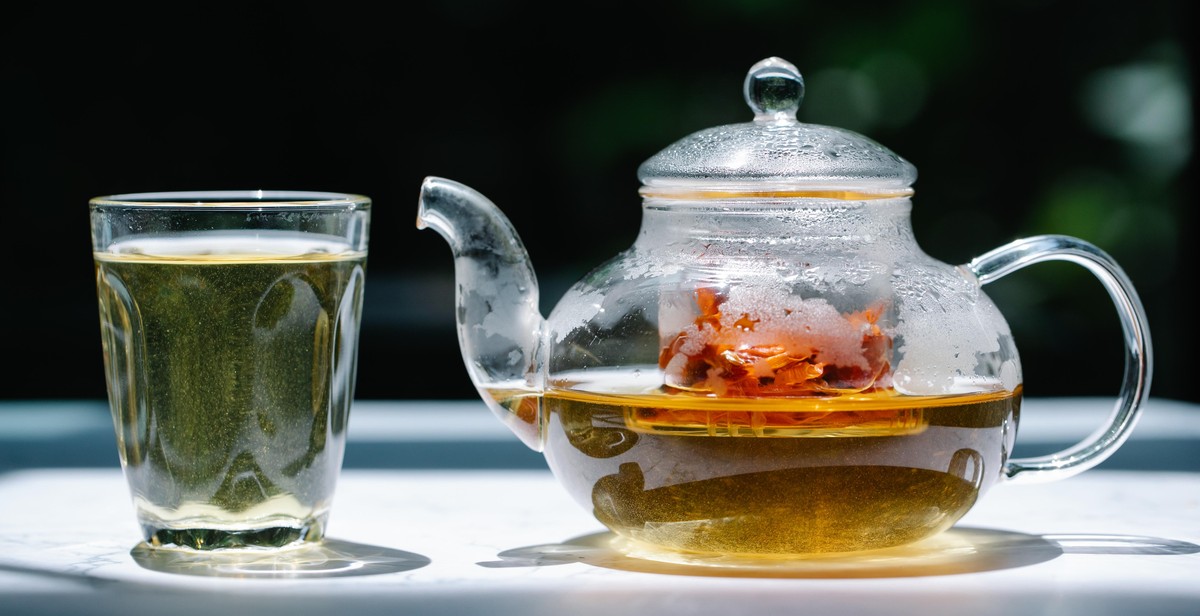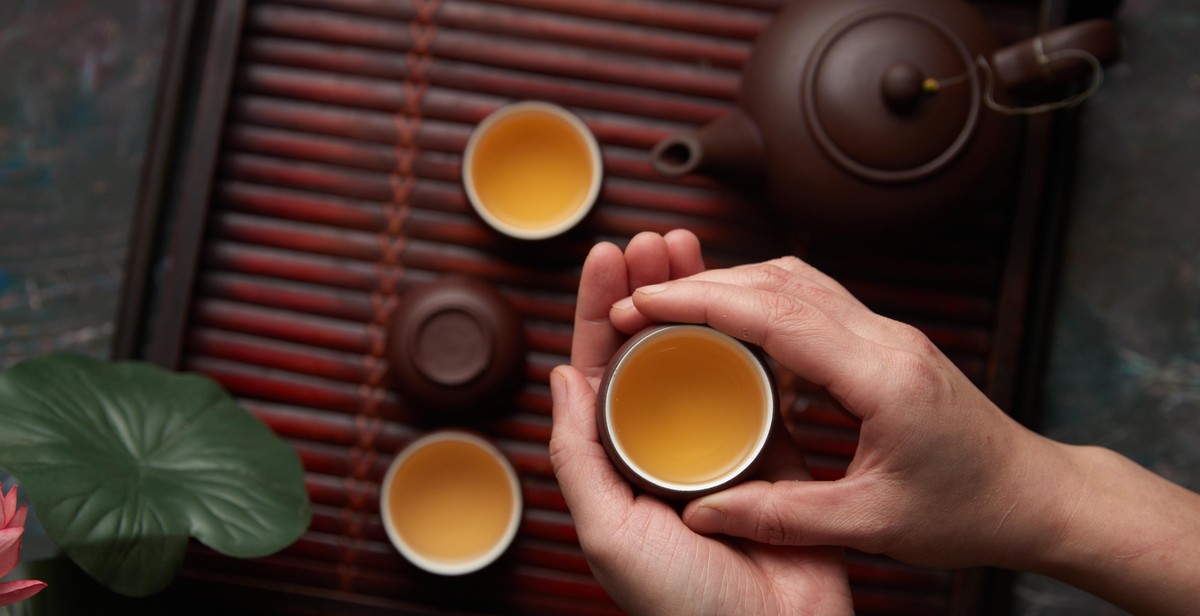How to Brew the Perfect Cup of Darjeeling Tea
Darjeeling tea is a type of black tea that is grown in the Darjeeling district of West Bengal, India. It is known for its unique flavor and aroma, which is often described as floral, fruity, and musky. Darjeeling tea is widely regarded as one of the finest teas in the world, and it is highly prized by tea connoisseurs for its delicate taste.
What Makes Darjeeling Tea Different?
Darjeeling tea is different from other black teas because it is grown in a specific region of India, and it has a unique climate and soil composition. The tea bushes grow at high altitudes in the Himalayan foothills, where they are exposed to cool temperatures and a misty climate. This unique environment gives Darjeeling tea its distinct flavor and aroma.
The Different Grades of Darjeeling Tea
Darjeeling tea is classified into different grades based on the time of year it is harvested and the quality of the leaves. The first flush, which is harvested in the spring, is considered the highest quality because the leaves are young and tender. The second flush, which is harvested in the summer, has a stronger flavor and aroma. The third flush, which is harvested in the fall, has a milder flavor and aroma.
When brewing Darjeeling tea, it is important to use high-quality loose leaf tea and to follow the proper brewing techniques to bring out the full flavor and aroma of the tea.
Choosing the Right Darjeeling Tea
Darjeeling tea is a premium tea that is grown in the Darjeeling district of West Bengal, India. It is known for its unique flavor and aroma, which is derived from the high altitude and cool climate of the region. However, not all Darjeeling teas are created equal. To brew the perfect cup of Darjeeling tea, it is important to choose the right type of tea leaves.
Understanding the Different Flushes
Darjeeling tea is classified into four different flushes, which refer to the time of year when the tea leaves are harvested. Each flush has a distinct flavor profile, and it is important to understand the differences in order to choose the right tea for your taste.
| Flush | Harvest Time | Flavor Profile |
|---|---|---|
| First Flush | Mid-March to May | Light and floral |
| Second Flush | June to mid-July | Musky and fruity |
| Monsoon Flush | Mid-July to September | Strong and bold |
| Autumn Flush | October to November | Mellow and nutty |
First flush teas are the most sought-after and expensive, while second flush teas are more widely available and popular. Monsoon and autumn flush teas are less common and have a different flavor profile that may not be to everyone’s taste.
Selecting the Best Quality Leaves
When selecting Darjeeling tea, it is important to look for high-quality leaves that are whole and unbroken. Whole leaves retain more of their flavor and aroma, while broken leaves can result in a bitter taste. Look for leaves that are bright and uniform in color, with a fresh aroma.
It is also important to choose tea that has been grown and harvested using sustainable and ethical practices. Look for certifications such as Fairtrade, Rainforest Alliance, or USDA Organic to ensure that your tea has been produced in an environmentally and socially responsible manner.
- Choose the right flush for your taste
- Look for high-quality, whole leaves
- Choose tea that has been produced sustainably and ethically

Preparing the Tea Leaves
Before you start brewing your Darjeeling tea, it is important to prepare the tea leaves properly. This will ensure that you get the best possible flavor and aroma from your tea. Here are the steps you need to follow:
Measuring the Tea Leaves
The first step is to measure the right amount of tea leaves. The general rule of thumb is to use one teaspoon of tea leaves per cup of water. However, you can adjust this according to your personal preference. If you like your tea strong, you can use more tea leaves, and if you prefer a milder taste, you can use less.
It is important to note that Darjeeling tea leaves are delicate and should be handled with care. Make sure you use a measuring spoon rather than eyeballing the amount of tea leaves.
Rinsing the Leaves
Once you have measured the tea leaves, the next step is to rinse them. This helps to remove any dust or debris that may have accumulated on the leaves during storage. Rinsing also helps to open up the leaves and release their flavor and aroma.
To rinse the tea leaves, place them in a strainer and hold them under running water for a few seconds. Then, shake off any excess water and transfer the leaves to your teapot or infuser.
Some tea experts recommend skipping the rinsing step, as it can wash away some of the flavor and aroma. However, if you are using high-quality Darjeeling tea leaves, rinsing can help to enhance their natural flavor and aroma.
Now that you have prepared the tea leaves, you are ready to start brewing your Darjeeling tea. In the next section, we will discuss the different brewing methods you can use to make the perfect cup of tea.

Brewing the Tea
Now that you have learned about the history and types of Darjeeling tea, it’s time to brew the perfect cup. Here’s how to do it:
Boiling the Water
The first step in brewing Darjeeling tea is to boil the water. It is important to use fresh, cold water for the best results. Fill a kettle with the desired amount of water and place it on the stove over high heat. Once the water reaches a rolling boil, remove it from the heat and let it cool for a few seconds.
Steeping the Tea Leaves
While the water is boiling, measure out the desired amount of tea leaves. For a single cup, use one teaspoon of loose tea or one tea bag. Place the tea leaves in a tea infuser or directly in the cup. Pour the hot water over the tea leaves and let it steep for 3-5 minutes. Steeping time can vary depending on the type of Darjeeling tea and personal preference. Avoid oversteeping, as it can result in a bitter taste.
Straining the Tea
After steeping, remove the tea leaves or tea bag from the cup. If using loose tea, strain it through a fine mesh strainer to remove any small particles. Darjeeling tea can be enjoyed plain or with a splash of milk and a sweetener of your choice. Sit back, relax, and savor the rich and complex flavor of Darjeeling tea.

Serving the Tea
After brewing the perfect cup of Darjeeling tea, it’s time to add some milk and sugar to enhance the taste. However, it’s essential to add these ingredients in the right quantity to avoid overpowering the delicate flavor of the tea.
Adding Milk
Adding milk to Darjeeling tea is a personal preference. Some people prefer to drink it black, while others like to add milk. If you decide to add milk, it’s essential to use whole milk or cream to complement the tea’s flavor. Skim milk or non-dairy milk alternatives may alter the taste of the tea.
When adding milk, pour it into the cup after steeping the tea for the recommended time. The amount of milk you add depends on your taste preferences, but a general rule of thumb is to use one part milk to three parts tea. Stir the tea gently to mix the milk and tea.
Adding Sugar
Sugar is another ingredient that’s added to tea to enhance its taste. However, it’s crucial to add sugar in moderation to avoid overpowering the tea’s natural sweetness.
When adding sugar, it’s best to add it to the cup before pouring the tea. The amount of sugar you use depends on your taste preferences, but a teaspoon of sugar per cup of tea is a good starting point. Stir the tea gently to dissolve the sugar.
Pairing with Snacks
Darjeeling tea pairs well with a variety of snacks, including biscuits, scones, and sandwiches. The tea’s delicate floral notes complement the flavors of these snacks, making for a delightful tea-time experience.
For a sweet pairing, try serving Darjeeling tea with shortbread cookies or scones with jam and clotted cream. For a savory pairing, serve the tea with cucumber sandwiches or cheese and crackers.
| Sweet Pairings | Savory Pairings |
|---|---|
| Shortbread cookies | Cucumber sandwiches |
| Scones with jam and clotted cream | Cheese and crackers |
Overall, Darjeeling tea is a versatile beverage that can be enjoyed with or without milk and sugar. Pair it with your favorite snack for a delightful tea-time experience.
Conclusion
Now that you have learned how to brew the perfect cup of Darjeeling tea, it’s time to sit back, relax, and enjoy your delicious creation. Remember, the key to a perfect cup of Darjeeling tea is to use the right amount of tea leaves, water temperature, and steeping time.
By following the steps outlined in this article, you can enjoy the full flavor and aroma of Darjeeling tea. Whether you prefer your tea plain or with a splash of milk and sugar, the perfect cup of Darjeeling tea is sure to satisfy your taste buds.
Moreover, Darjeeling tea is not just a delicious beverage, it also has numerous health benefits. It can boost your metabolism, improve digestion, reduce stress, and even lower your risk of chronic diseases.
So, next time you crave a warm and comforting drink, brew a cup of Darjeeling tea and savor the rich taste and aroma. With a little practice and experimentation, you can perfect your brewing technique and create your own signature blend of Darjeeling tea.
Thank you for reading this article, and we hope you enjoy your perfect cup of Darjeeling tea!
